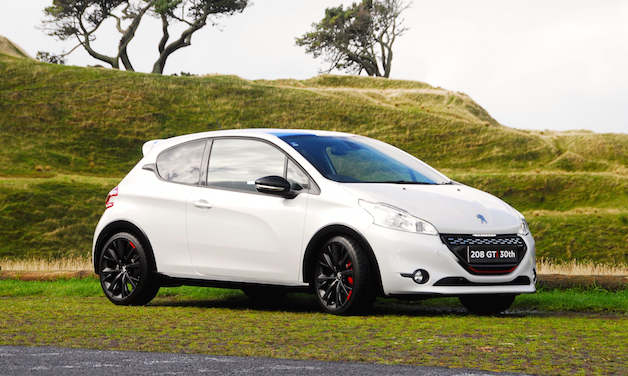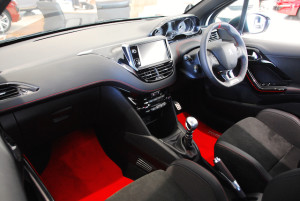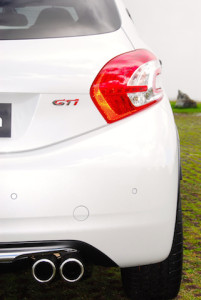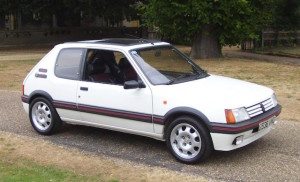
It’s open to argument but the 30th anniversary version of the Peugeot 208 GTi is probably the most exclusive new car to land in New Zealand in recent years.
The French carmaker has limited production to 800 examples, each one individually badged to commemorate the much-loved 205 GTi, the three-door flyer launched in 1984 at the Paris motor show.

Peugeot’s NZ distributor Sime Darby put its name down for six 30th birthday models, but demand elsewhere in the world meant it had to settle for … THREE, each priced at $46,990.
One has been sold; one is waiting to be sold; and the remaining example is on the water. Peugeot dealers in Britain were given 100. Peugeot Australia reportedly missed the boat altogether.
The 208 GTi 30 is built by Peugeot Sport (PS), the company’s go-fast arm. It takes the PS team about six hours to strip down a standard 208 GTi and turn it into the GTi 30.

Engineers lower the ride height by 10mm, widen the front track by 22mm and rear by 18mm, remap the steering to improve turn-in, soften the front anti-roll bar, add 18-inch wheels, red four-pot Brembo front brake calipers, round exhaust outlets, and, hey presto, we have a special edition weighing 1160kg.
The cabin gets a makeover, too, with special trim and extra-bolstered seats designed by PS. A plate with the build number sits above the windscreen.
Under the bonnet is a revised version of Peugeot’s turbocharged four-cylinder 1.6-litre engine, which delivers 153kW (208bhp, get it?) at 6000rpm and a healthy 300Nm at 3000rpm. Power is up 6kW and torque 25Nm over the standard car. Also better is the C02 emissions figure of 125gr/km, the lowest in class, says Peugeot.
Helping to get the power down through the front wheels is the six-speed manual gearbox and clever limited-slip differential from the RCZ R coupe, although the GTi 30 gets a different sixth gear ratio.
So what’s the all-dancing/all-singing hatchback like to drive? A brief run at modest speeds on a winding wet road in Auckland showed up a car sharper all round than the standard 208 GTi.

Whipping through a series of knobbly bends at 50km/h or 60km/h can reveal a lot about a car’s dynamics, all the while thinking about the week I spent at the wheel of the standard 208 GTi on a mix of roads, including some hours at the Highlands Park raceway, near Cromwell.
The front diff from the RCZ R helps get the GTi 30’s power down better, no question. The lower ride height, wider tracks, and suspension revisions help it hold a tighter and flatter line through corners. It’s a nifty little chassis, for sure. Peugeot has done some great ones.
The extra 6kW of power from the 1.6-litre unit isn’t obvious. It’s bundled up in the extra torque as the engine pulls strongly through the gears while the RCZ R differential searches constantly for the front tyre with the most grip.
There’s a world of difference between the 205 GTi and the 208 GTi. The first 205 GTi ran a revvy 1.6-litre four-cylinder engine delivering 77kW. A 1.9-litre with 94kW and more torque soon came along. Pity that only three Kiwis will get to regularly remind themselves how things have changed.
